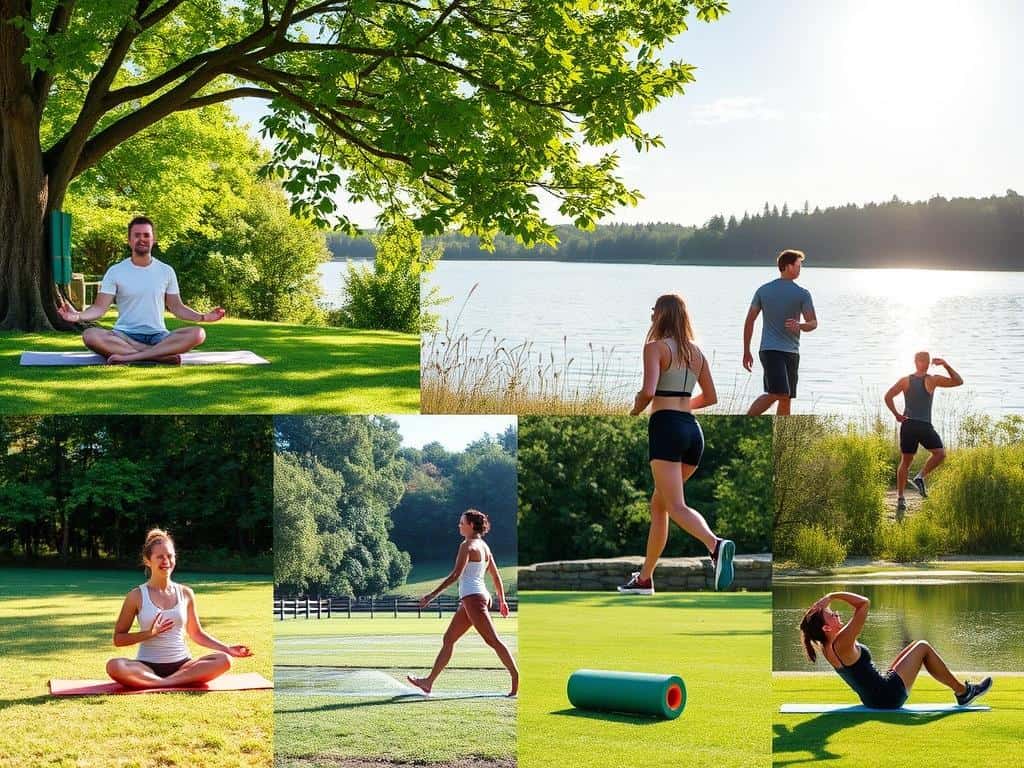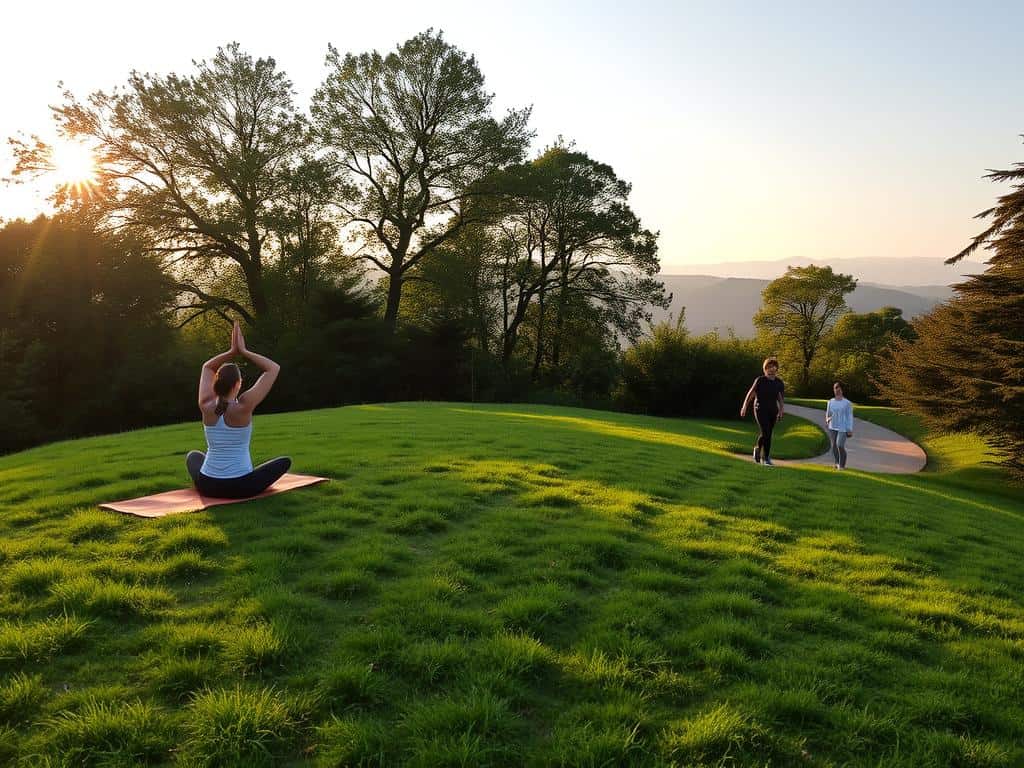A 2018 study showed something interesting. Active recovery can really cut down lactic acid in muscles and improve blood flow. This speeds up healing and lessens muscle soreness. It’s vital for anyone looking to recover from fitness activities. Active recovery is way better than just resting, especially after intense workouts. It can seriously improve my recovery experience, making me feel better physically and mentally.
It’s important not to skip recovery when looking for wellness tips. Walking, swimming, and yoga do wonders for our bodies and minds. I’ll talk about five active recovery methods that help heal faster and promote long-term wellness.
Key Takeaways
- Active recovery is vital for reducing muscle soreness and boosting blood flow.
- Implementing methods like walking and swimming can enhance fitness recovery.
- Active recovery is often more effective than passive recovery methods.
- Incorporating yoga and foam rolling can aid in muscle tension relief.
- Staying active during recovery can lead to improved athletic performance.
Understanding Active Recovery and Its Importance
Active recovery is when you do light exercises after intense workouts. It’s different from just resting because it helps you recover faster and improve your performance. I like to walk or cycle lightly. These activities increase blood flow which helps get rid of waste in muscles. This leads to faster healing and healthier muscles.
What Is Active Recovery?
Active recovery means doing easy activities to help your body recover after tough workouts. I might choose a calm walk or a yoga session. These activities keep you moving gently to avoid stiffness and soreness. They help bring back my energy without overdoing it. This way, I get all the active recovery benefits.
Benefits of Active Recovery
Active recovery has many benefits. It lessens muscle soreness and makes you more flexible. This is important for feeling good every day and moving freely. I find that gentle workouts help healing nutrients reach my muscles better.
This helps fix my muscles and controls lactate levels, reducing lactic acid. It’s good for the mind too, making you feel well. People who pack their workouts into weekends really need active recovery. It keeps them from getting too tired and helps avoid training too hard. In my experience, active recovery helps me get back to intense workouts more easily.
Active Recovery Techniques for Enhanced Healing
I’ve found that adding active recovery techniques to my routine truly helps my healing. We’ll look at great strategies like walking, swimming, and yoga. These activities really help recovery.
Walking
Walking is a simple way to boost healing. Low-intensity walks improve blood flow to muscle. This helps get rid of waste from hard workouts. After a tough workout, a calm walk helps my body and mind.
Swimming
Swimming is amazing for active recovery. Being in water makes me feel light and eases joint stress. I do laps or water walking to stay gentle but active. Swimming cuts down on soreness and boosts recovery.
Yoga and Stretching
Yoga has been a game-changer for my flexibility and recovery. It lets me stretch out tight areas, move better, and relax. Doing gentle stretches helps blood move, easing stiffness and speeding up recovery. Yoga is great for both body and mind healing.

Active Recovery Techniques to Boost Wellness
Keeping active is key to staying well, especially when you’re recovering. Foam rolling and light cycling are two great recovery methods. They help your body heal without putting too much pressure on it.
Foam Rolling
Foam rolling is popular because it really helps with recovery. It boosts blood flow to your muscles, easing soreness after exercise. This process, called self-myofascial release, targets sore spots. It also lowers inflammation and helps you move better. So, foam rolling is an important part of recovering actively.
Doing it often fights off the bad muscle soreness that comes after hard exercise.
Light Cycling
Light cycling is another helpful method. It keeps your heart going without stressing your joints too much. Easy pedaling helps get rid of body waste, which helps muscles recover. This gentle exercise builds endurance and supports recovery too.
Adding light cycling to recovery days boosts my muscle health and motion range. It’s a big part of wellness recovery for me.
Conclusion
I’ve really improved my fitness journey by trying active recovery. This means I do things like walk, swim, yoga, roll out my muscles, and cycle lightly. I feel better and heal faster because of these activities. Studies show that active recovery helps cut down muscle tiredness and helps with healing.
In a study with canoeists and football players, just 20 minutes of active recovery made a big difference. They focused on the same muscles they used before and felt less tired. Activities like light cycling and walking really helped ease their muscle pain. Unlike doing nothing, active recovery kept their strength the same while helping their muscles recover.
I’ve made these recovery methods a big part of my life. This includes drinking plenty of water, eating right, and getting enough sleep. I want to help others understand these benefits too. Active recovery not only helps physically but is also great for mental well-being and keeps your fitness journey on track.



